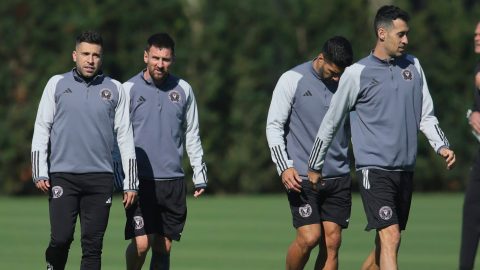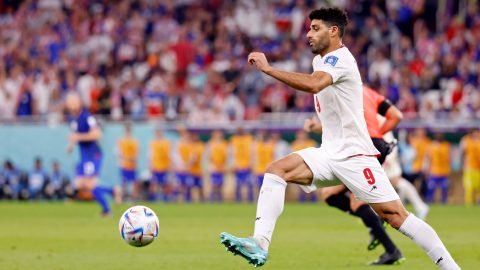 The 18-24 month campaign to qualify for the FIFA World Cup finals reveals to the world what a national soccer team is made of.
The 18-24 month campaign to qualify for the FIFA World Cup finals reveals to the world what a national soccer team is made of.
Major international tournaments like the World Cup can show where a team stands (in relation to its competition) at a given moment in time, but we learn the fundamental lessons about a team from the long road to qualification.
The United States Men’s National Soccer Team qualified for the 2014 World Cup on Tuesday, courtesy of a 2-0 victory against Mexico and Honduras’ draw against Panama. Reaching the World Cup is no longer a notable achievement for the U.S., as 2014 will be the Americans’ seventh straight appearance in the showcase event. At this point in its history as a soccer nation, it would take a calamity of unspeakable proportions for the U.S. to fail to qualify.
While qualifying doesn’t, in itself, represent a major change in U.S. soccer’s place in the world, the manner in which it qualified is a telling sign of progress. Under head coach Jurgen Klinsmann, this U.S. men’s national team booked its place in Brazil with two games to spare. This is a major achievement, considering the team only plays ten games in the final round of qualifying (known as the “hexagonal”).
Since assuming his current position in August 2011, Klinsmann has taken the U.S. men’s national team in a bold new direction. The emphasis on hard work, internal competition and accountability for performances has helped change the mentality of the players Klinsmann has at his disposal. As he admitted in September 2012, altering mindsets was difficult, but an even bigger challenge was to translate that mental change into achieving on-field consistency and creating a more “proactive” style of play.
The U.S. has already set a new record for wins in a calendar year with 14, and it still has at least two games left to play. The Americans achieved this despite playing all but one of its exhibitions against tough European teams, an arduous qualification campaign against CONCACAF foes who are growing in stature and competing in (and winning) the CONCACAF Gold Cup with a “B” squad.
Klinsmann is neither a coaching genius nor is he a miracle worker. He has tried many things to push his team to the next level, and they haven’t all worked. Nevertheless, his gutsiest decisions — temporarily dropping Jozy Altidore, starting Omar Gonzalez and Matt Besler and depending on Eddie Johnson come to mind — have had positive effects, and the results both speak for themselves and validate his approach. The German-American tactician will lead a tight-knit group of players to Brazil, and he will spend the next nine months trying to put the U.S. in position to do something special when it faces the world’s best at the World Cup.
“Step-by-step, we’re getting closer to taking the game to the opponents,” Klinsmann said. “We’re not sitting back and reacting to what happens. We want to take it into their half. Every game is different. We know that, too, but I think we’ve made big progress in terms of tactical variation and in terms of commitment both ways of the game offensively and defensively.
“Players know it only goes through hard work. It only goes through a lot of effort. Certain things that maybe two years ago they may have wondered what this was all about. All this extra work, extra here, extra there, now it’s just normal. The players come in and they know there are double sessions waiting for them. The players know what we expect tactically. The players know there’s another guy behind them in every position, that if he doesn’t give everything he has the next one comes in and steals his spot. Therefore, there’s more competition and I think if you look at the entire picture they can be really proud of themselves.”
The successful qualification campaign raises both optimism and expectations, but, as in past World Cups, the Americans’ target remains the same. They want to progress out of their group and then try to win each successive game. A lot can and will change between now and then, so it’s hard to predict how well the team will do with any authority.
The 2014 World Cup qualifying cycle was a turning point in the history of the U.S. men’s national team. It was where “Team USA” became less of a club — one with established hierarchies and a playing style created by the players’ familiarity with each other — and more of what they call national teams in many Spanish-speaking countries: “una seleccion,” or a selection of players of a given nationality. In this environment, the best players at any given moment in time wear the jersey, and it is incumbent upon them to keep it. This is Klinsmann’s great gift to U.S. soccer, and it should be his legacy’s cornerstone.
Have a question for Marcus Kwesi O’Mard? Send it to him via Twitter at @NESNsoccer or @mkomard, his Facebook page or NESN Soccer’s Facebook page or send it here. He will pick a few questions to answer every week for his mailbag.



